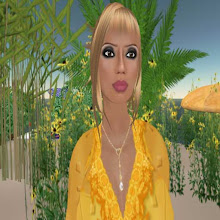Magic Turtles - A First Glimpse of Hanoi
Previous Related Posts:

When I was growing up, watching the Vietnam War on television in the Cincinnati 'burbs, the name "Hanoi" conjured up images of what I imagined was bleak Communism: dark, concrete block buildings, grey city streets, a drab existence. What can I say, how was I to know better? I was a kid and there was no Internet, and it never occurred to me to send off for books. Of course, years later, I read about Vietnam before I traveled there, but I still ended up in Hanoi due to an accident of geography. I booked a hotel in Hanoi because of Hanoi's strategic location in the middle of a triangle made up of hill tribe country to the west, stunningly beautiful Halong Bay to the east and charming towns such as Hoi Ann just a bit further south.
Due to flight schedules from Bali, I flew to Saigon and bought a same-day plane ticket to Hanoi. Buying a Saigon/Hanoi ticket was difficult and expensive to do from outside the country, but quite easy once I was there; the planes went so often it was almost like booking a bus ticket. I had booked a hotel in Hanoi ahead of time, because I was traveling alone, and I knew it would be night when I arrived.
So just after dark, I found myself on an airport shuttle from the airport to the center of Hanoi near Hoan Kiem Lake. We traveled through broad boulevards lined with green foliage and elegant, quietly aging, two-story French colonial buildings, whose slatted wooden doors shielded secrets of not-so-long-ago intrigue. We left those streets behind for more narrow ones swirling with life and color. Here, in the center of Hanoi, street vendors sold French baguettes, families sat along the sides of the streets on low stools, barbecuing their dinners on small grills, and rickshaws pulled both locals and tourists intent on errands or an evening's entertainment. Hither and thither, women in traditional round, pointed coolie hats and "pajamas" carried goods in buckets balanced across their shoulders on long poles. I was so enchanted I forgot to breathe.
The next day, I awoke early to the sound of street vendors calling to their prospects over the hum of motorbikes. I stepped through the French doors of my balcony to watch the farmers from the country go about setting up their produce to sell on the street. I went downstairs to breakfast - a French baguette, jam and tea - and out the door to head for the lake. Hoan Kiem Lake is an oasis in the midst of modern office buildings and non-stop traffic. Hoan Kiem means "Lake of the Restored Sword", because in the 15th century it is said a nobleman successfully defended his country against Ming China with a sword given him by a turtle living in the lake. To commemorate this event, the emperor built a tower that still stands today on an island at the south end of the lake. Enormous turtles have always lived in this lake, and probably still do today, but the last one was spotted in the late '90's. I did not go to the south end of the lake the first day, but later I discovered a fabulous ice cream parlor at that end. (Okay, the ice cream parlor is of no historical significance, but trust me, in the oppressive summer heat of Hanoi, it was of huge personal import!)
I thought I knew Asian traffic from years of negotiating the streets of Indonesa, Thailand, Singapore and Hong Kong. I found out I was but a babe in the woods. Crossing a street in a Vietnamese city is a test of bravery and fortitude. I have heard Saigon traffic is even more frantic than that of Hanoi; I have tried to imagine that and failed. Traffic in Vietnam is mostly a solid wave of motorcycles interspersed with bicycles and some very large trucks. It doesn't stop for you; you just make your way purposefully across the street at a consistent speed and traffic swerves around you. If you try to avoid the traffic by dodging it, you will be hit for sure. I knew enough to wait for some Vietnamese pedestrians to cross the streets and just move with them.
Passing the test of negotating traffic without being killed earned me the right to walk along the walkway of Hoan Kiem Lake, and it was worth it. I was charmed by the well-kept grounds, the couples sitting on park benches and the serenity. I was early enough to see some older people practicing Tai Chi (though of course I was used to this same site at certain parks in San Francisco), and I walked across an ornate, red bridge to the small island at the north end of the lake to Ngoc Son temple, built during the Tran Dynasty (1225 to 1400). Later in the week, when I visited the southern part of the lake, I thought that the juxtaposition of high, modern office buildings looming on the shore behind 15th century Tortoise Tower pretty much summed up Hanoi in a nutshell.
I wiped my forehead; it was already getting extremely hot. With good reason, even the budget hotels in Hanoi were air-conditioned, and I quickly established a routine of going out in the early morning and the later afternoon, trying, not always successfully, to be back in my hotel in the middle of the day. Mad dogs and Englishmen, and all that.
To be cont...

